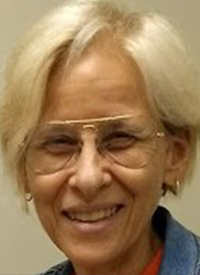Opinion: Narrative Oncology Can Help RNs and Social Workers Better Relate to Our Work
Narrative oncology is the practice of funneling our experience in health care into stories that are emotional and humanistic.

Narrative medicine was started in 2001 by Rita Charon, MD, PhD, of Columbia University.1 Charon graduated from Harvard Medical School in 1978 and completed her residency at the Montefiore Hospital and Medical Center in the Bronx, New York, before going on to teach at Columbia University College of Physicians and Surgeons. Throughout the 1990s, she completed both a masters and a doctorate in English.
In 1993, she helped develop an innovative new teaching methods, now referred to as narrative medicine. She called her new program the parallel chart.1 This referred to fusing the arts, which included the written word and literature along with the field of medicine to create a better doctor-patient experience. In 1993, this system was integrated into Columbia University’s medical school, becoming the only narrative competency course in a US medical school.
As part of the parallel chart system, Charon asked medical students to document their reactions to their patient’s individualized problem or care. She also asked them to take not of patients reactions, in an effort to make sense of what the patient is going through daily. This information would be used to explore areas of information deficit or overload between the care team and the patient.
The term narrative medicine was created around a concept or model of four elements. They are empathy, reflection, professionalism, and trust.2 The field has an emphasis on storytelling. Physicians, and other health care workers, such as nurses and clinical social workers can hone their skills through looking back on what they have written, through reflective writing. They can also have others read their written words by sharing their stories and talking about them. By learning to funnel their experiences through storytelling, student in medicine are believed to deepen their ability to empathize. It has been argued that narrative medical theory education and narrative writing can promote the development of professionalism, empathy and humanistic care ability of health care professionals.2
Radiation Oncology
Radiation oncology seems like a very high-tech field because there are so many mechanical components. Therefore, the ties between narrative medicine and radiation oncology may not seem obvious at first. However, there is a rich history present between the 2 fields.
Anna M. Laucis, MD, MPhil, wrote a guest commentary in the ASCO Connection in 2022.3 She discussed the journal Practical Radiation Oncology and its’ corresponding Narrative Oncology section. Laucis noted how narrative medicine is unique in that in provides health care professionals an outlet to experience the emotions of their work—including anger, grief, bafflement, amazement, etc.
The ASCO Post began running narrative oncology features in 2012.There was a Narratives in Oncology special issue. In the first issue, oncologists and their profiles were highlighted. Other outlets have offered similar stories. Since 2003, The American Society of Radiation Oncology (ASTRO) has showcased History Committee Interviews with leaders in the radiation oncology field.More recently, the Journal of Clinical Oncology has developed an Art of Oncology section which looks at physician experiences caring for cancer patients.ASTRO also had a poetry and artwork section.
For her own part, Laucis shared how the practice of narrative oncology helped her make sense of the passing of a patient under her care, a patient who had been receiving treatment for head and neck cancer. She explained that, for her, closure came through saying goodbye to the patient, and allowing herself to have a moment sitting beside the patient, envisioning herself, not as a doctor, but as a human being, full of complicated emotions.
“That is the role I see for narrative oncology: to help us connect, and thread the needle, or at least try. So that we all may help each other, in our own unique ways, determine how to say goodbye,” she shared.
Relevance to RNs and Social Workers
For RNs and clinical social workers, narrative oncology makes more sense than ever before. We form strong ties to patients, and with the advent of social media, and instant access to each other, creating opportunities to process patient experiences as a community is very accessible. By allowing ourselves to reflect on our experiences caring for our patients, we allow ourselves to experience the emotions that naturally come with the work.
References
- Changing the face of medicine Dr. Rita Charon. Columbia University. Accessed March 15, 2023. https://cfmedicine.nlm.nih.gov/physicians/biography_58.html
- Xue M, Sun H, Xue J, et al. Narrative medicine as a teaching strategy for nursing students to developing professionalism, empathy and humanistic caring ability: a randomized controlled trial. BMC Med Educ. 2023;23(1):38. doi:10.1186/s12909-023-04026-5
- Laucis, A. How to say goodbye: reflections on the role of narrative oncology. ASCO Connection. July 27, 2022. Accessed March 12, 2023. https://connection.asco.org/blogs/how-say-goodbye-reflections-role-narrative-oncology
Latest Conference Coverage
2 Commerce Drive
Cranbury, NJ 08512
All rights reserved.



